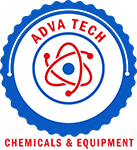Description
Cytivas Whatman TCLP test filters are acid-treated with low metal content. They support TCLP testing by providing accurate information about TCLP limits to ensure the best possible disposal plan can be put into action. Toxicity Characteristic Leaching Procedure (TCLP) is designed to predict the toxicity of hazardous waste. Industrial waste must comply with established TCLP limits to ensure that hazardous contaminants, known as landfill leachate, do not migrate into groundwater and threaten local drinking water sources. By accurately characterizing the degree of contamination, material can be disposed of as safely and economically as possible.
• Used for EPA Method 1311
• The Whatman TCLP Filter is manufactured using a binder free borosilicate glass microfiber with a particle retention rating of 0.6 to 0.8 m.
• These acid treated, low metal filters are available in a variety of diameters. The 90 mm filter is required for volatile samples and use with a Zero Headspace Extractor.
• The 142 mm filter is typically used with nonvolatile samples in an approved jar.
Specifications
• Nominal air flow: 19s/100 mL/in2
• Nominal thickness: 420 m
• Nominal basis weight: 75g/m2
• Maximum recommended temperature: 550°C
• Typical particle retention in liquid: 0.7 m
• Typical water flow rate: 60 mL/min
TCLP Limits
To dispose of hazardous waste in a United States municipal landfill, TCLP limits must fall within standard levels set for maximum contamination levels (MCLs). If MCLs are exceeded, the producer must dispose of the materials at a specialized hazardous waste facility, which increases costs significantly. Acid-treated, low metal Whatman TCLP test filters from Cytivas business can help to determine what steps, if any, must be taken to mitigate landfill leachate risk.
†U.S. Sales Only
Image(s) are representative of the product group and not necessarily the individual product.


